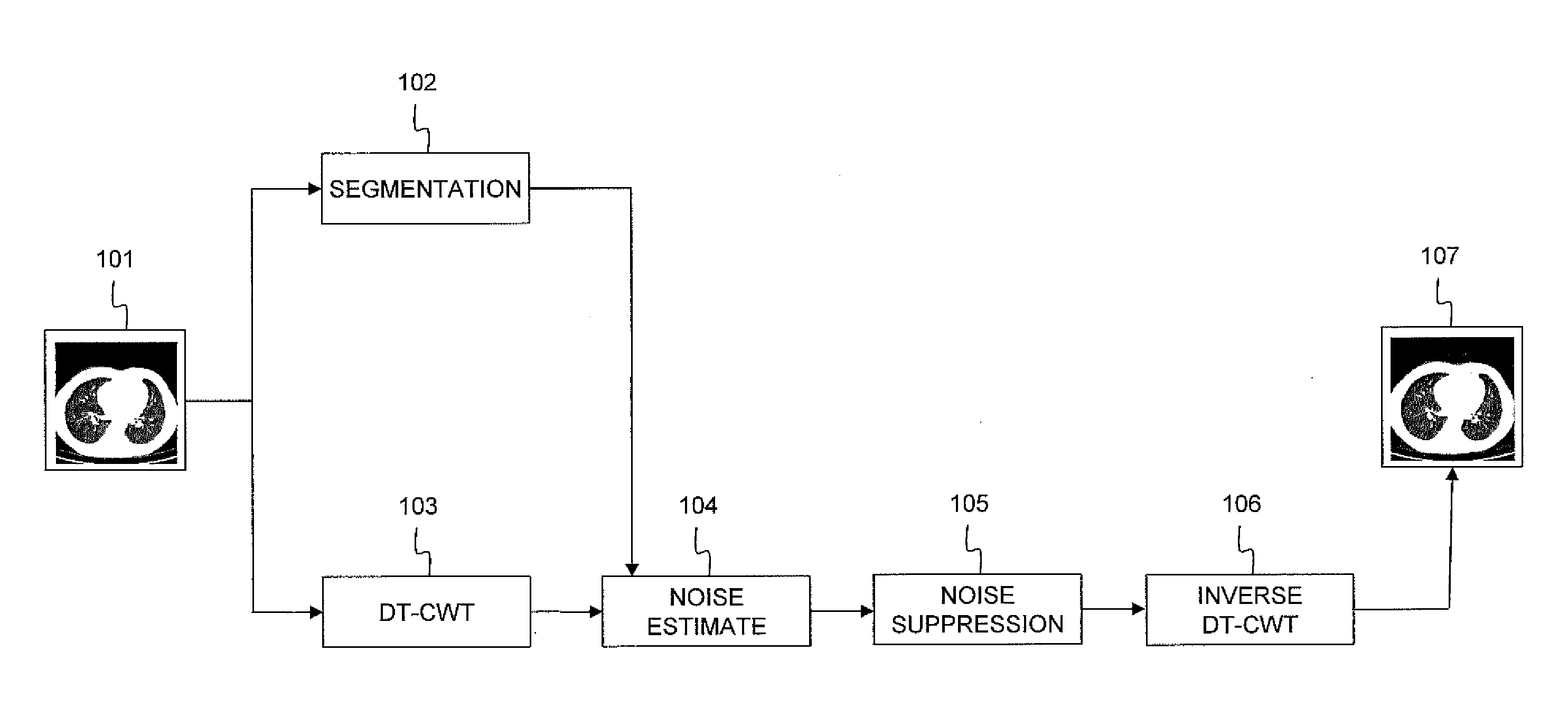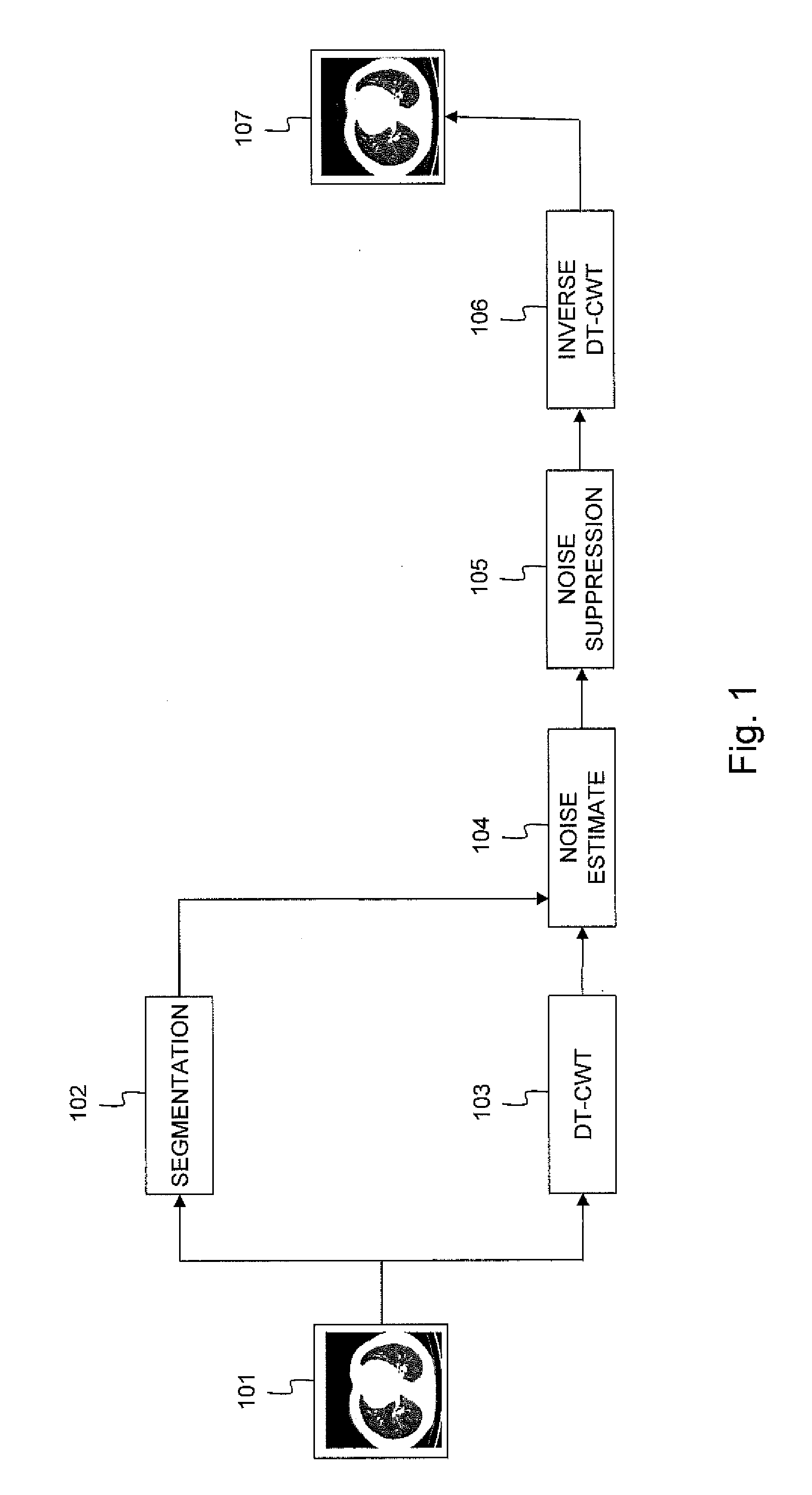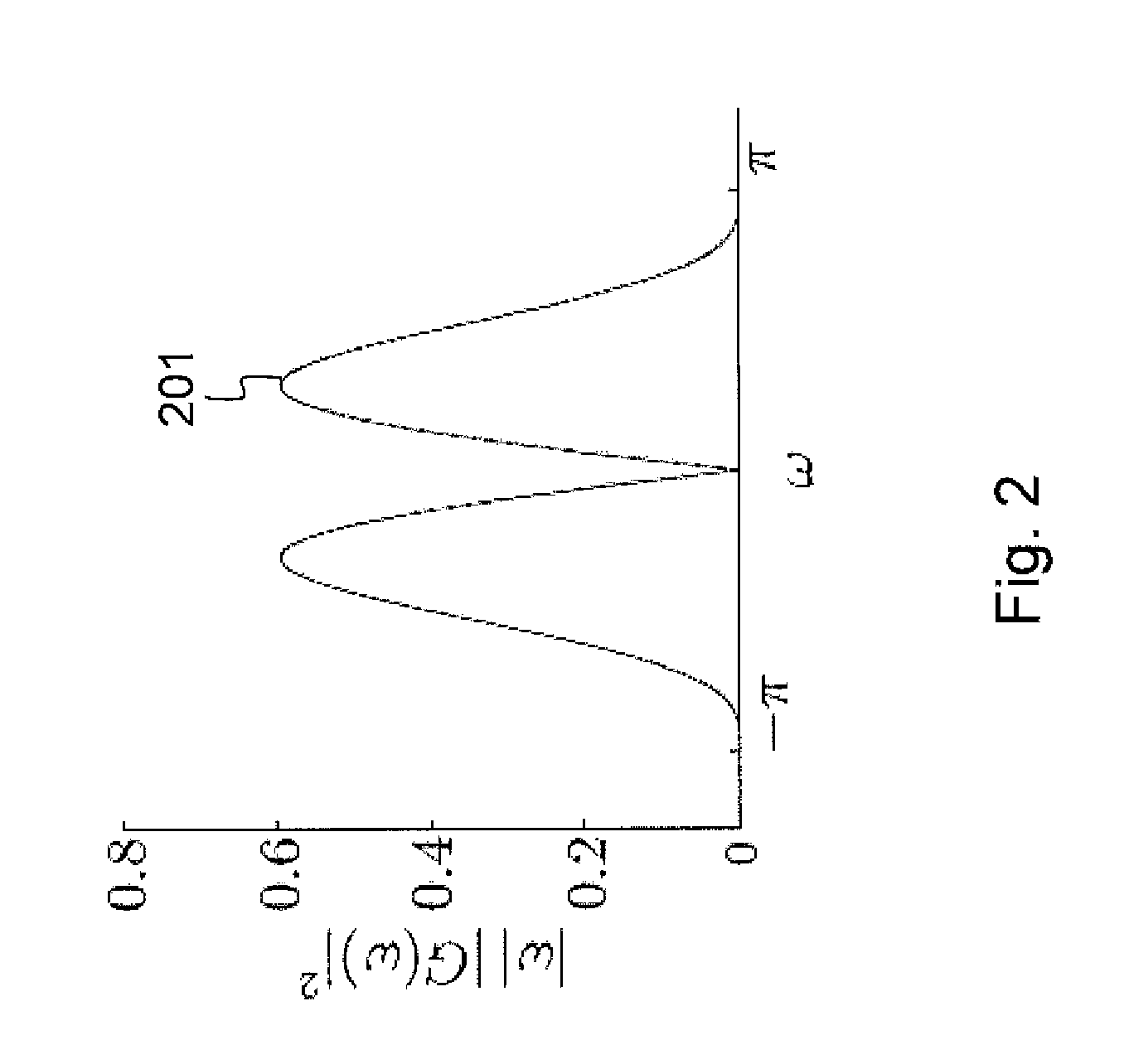Method and device for estimating noise in a reconstructed image
a reconstructed image and noise estimation technology, applied in image analysis, image enhancement, instruments, etc., can solve the problems of annoying the radiologist, wrong diagnosis with the physician, straight lines in the image domain, etc., to improve the performance of denoising, improve the orientation selectivity, and improve the denoising performance
- Summary
- Abstract
- Description
- Claims
- Application Information
AI Technical Summary
Benefits of technology
Problems solved by technology
Method used
Image
Examples
Embodiment Construction
)
[0061]FIG. 1 illustrates an embodiment of the invented method for estimation and removal of noise applied to a noisy reconstructed low-dose CT image 101. Firstly, a segmentation algorithm followed by a region merging procedure is applied as is indicated by 102. The further processing of segments that are not of interest, e.g. the air surrounding the patient and saturated regions of the body, is skipped. Simultaneously, each slice of the CT volume is multi-resolution transformed using the Dual-Tree Complex Wavelet Transform or DT-CWT in 103. It is assumed that the Noise Power Spectral Density or NPSD is constant within each orientation sub-band of each segment. Next, in step 104, the noise is estimated in every segment. The technique used thereto is adapted to the noise PSD in each segment and orientation, and will be described in more detail in the following paragraphs. The noise estimation step 104 terminates the estimation method according to the invention. Following the estimati...
PUM
 Login to View More
Login to View More Abstract
Description
Claims
Application Information
 Login to View More
Login to View More - R&D
- Intellectual Property
- Life Sciences
- Materials
- Tech Scout
- Unparalleled Data Quality
- Higher Quality Content
- 60% Fewer Hallucinations
Browse by: Latest US Patents, China's latest patents, Technical Efficacy Thesaurus, Application Domain, Technology Topic, Popular Technical Reports.
© 2025 PatSnap. All rights reserved.Legal|Privacy policy|Modern Slavery Act Transparency Statement|Sitemap|About US| Contact US: help@patsnap.com



